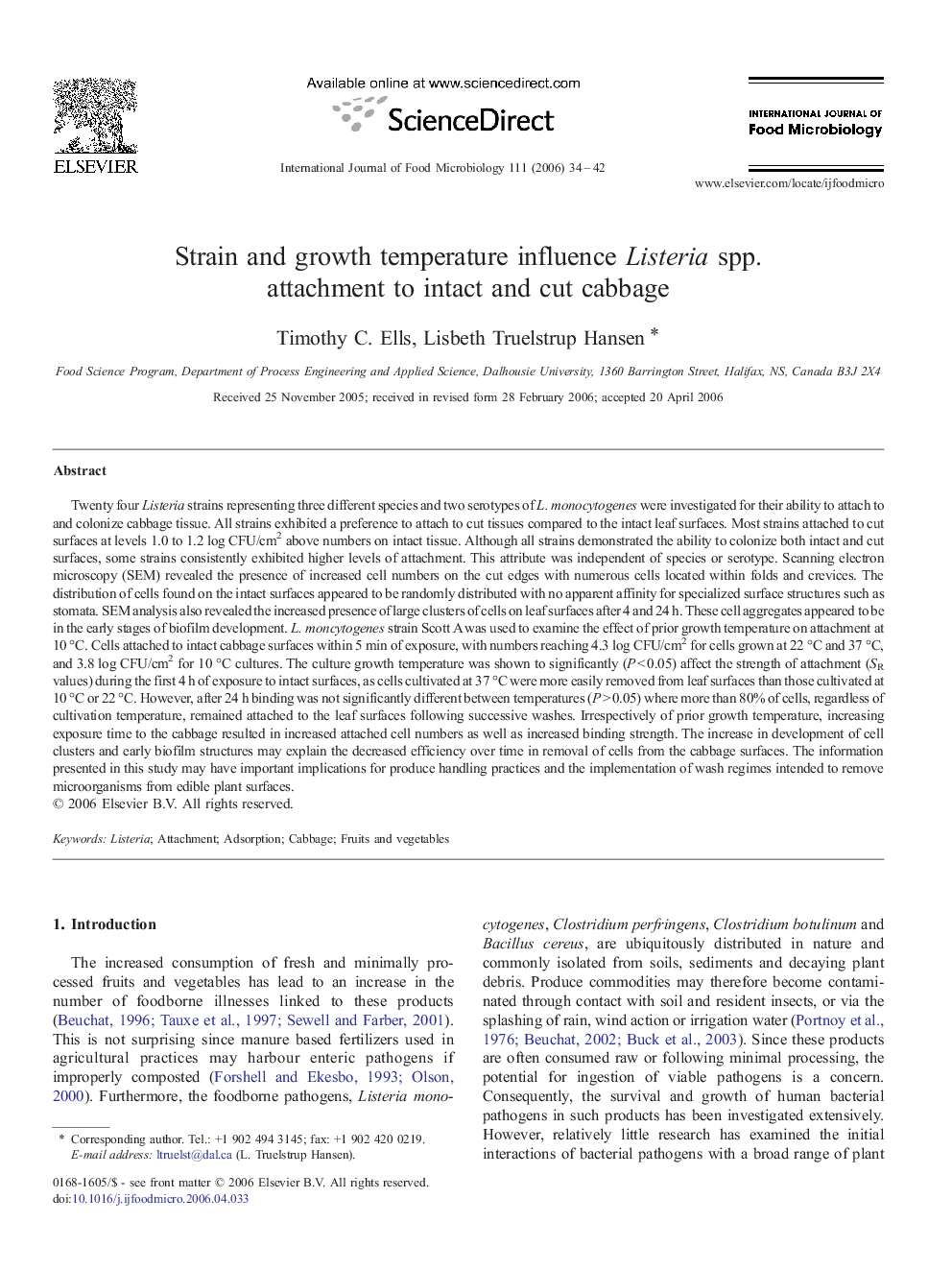| کد مقاله | کد نشریه | سال انتشار | مقاله انگلیسی | نسخه تمام متن |
|---|---|---|---|---|
| 4370199 | 1616762 | 2006 | 9 صفحه PDF | دانلود رایگان |

Twenty four Listeria strains representing three different species and two serotypes of L. monocytogenes were investigated for their ability to attach to and colonize cabbage tissue. All strains exhibited a preference to attach to cut tissues compared to the intact leaf surfaces. Most strains attached to cut surfaces at levels 1.0 to 1.2 log CFU/cm2 above numbers on intact tissue. Although all strains demonstrated the ability to colonize both intact and cut surfaces, some strains consistently exhibited higher levels of attachment. This attribute was independent of species or serotype. Scanning electron microscopy (SEM) revealed the presence of increased cell numbers on the cut edges with numerous cells located within folds and crevices. The distribution of cells found on the intact surfaces appeared to be randomly distributed with no apparent affinity for specialized surface structures such as stomata. SEM analysis also revealed the increased presence of large clusters of cells on leaf surfaces after 4 and 24 h. These cell aggregates appeared to be in the early stages of biofilm development. L. moncytogenes strain Scott A was used to examine the effect of prior growth temperature on attachment at 10 °C. Cells attached to intact cabbage surfaces within 5 min of exposure, with numbers reaching 4.3 log CFU/cm2 for cells grown at 22 °C and 37 °C, and 3.8 log CFU/cm2 for 10 °C cultures. The culture growth temperature was shown to significantly (P < 0.05) affect the strength of attachment (SR values) during the first 4 h of exposure to intact surfaces, as cells cultivated at 37 °C were more easily removed from leaf surfaces than those cultivated at 10 °C or 22 °C. However, after 24 h binding was not significantly different between temperatures (P > 0.05) where more than 80% of cells, regardless of cultivation temperature, remained attached to the leaf surfaces following successive washes. Irrespectively of prior growth temperature, increasing exposure time to the cabbage resulted in increased attached cell numbers as well as increased binding strength. The increase in development of cell clusters and early biofilm structures may explain the decreased efficiency over time in removal of cells from the cabbage surfaces. The information presented in this study may have important implications for produce handling practices and the implementation of wash regimes intended to remove microorganisms from edible plant surfaces.
Journal: International Journal of Food Microbiology - Volume 111, Issue 1, 15 August 2006, Pages 34–42